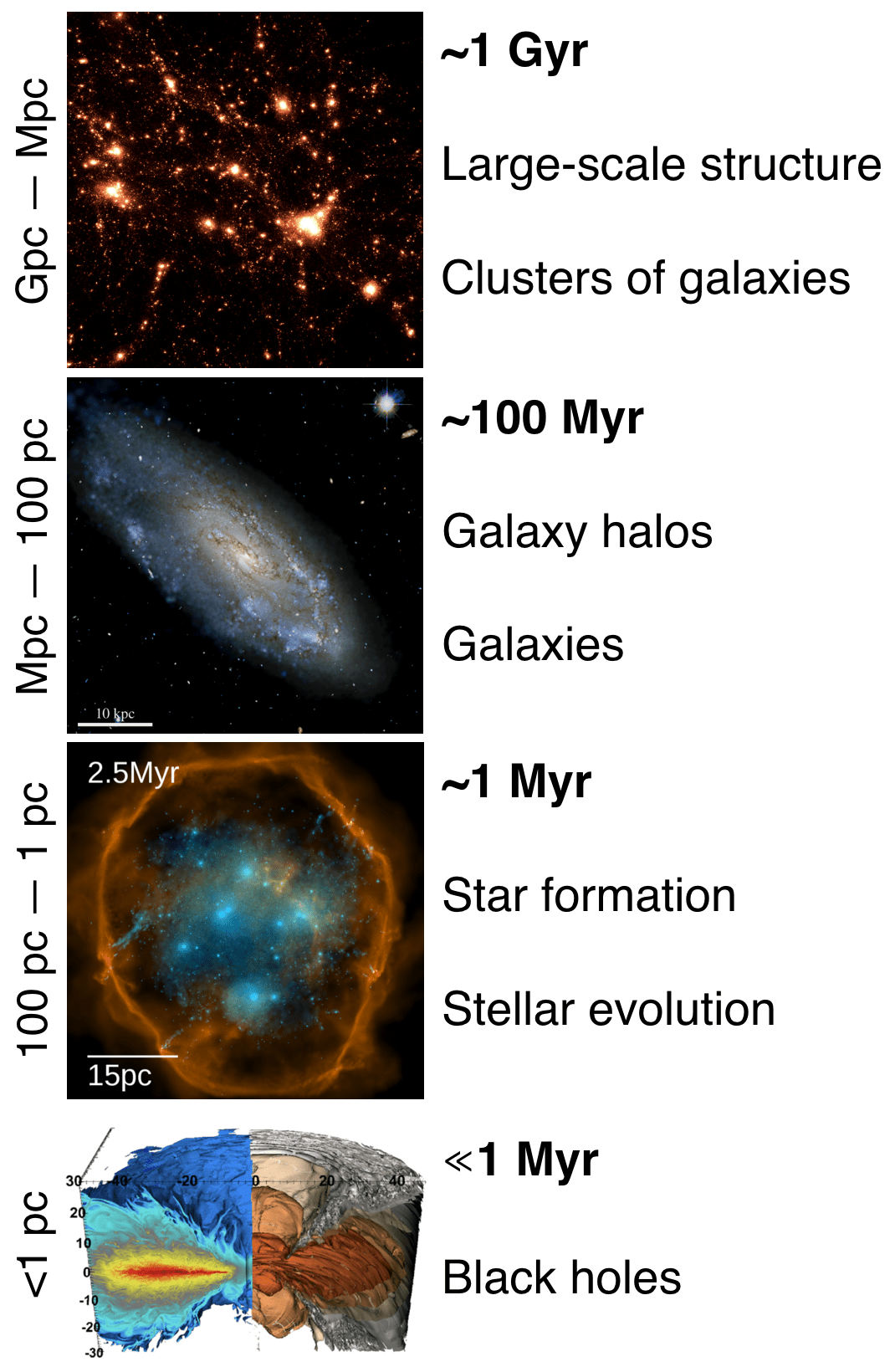Research
| While our research interests are centered around galaxy formation, we study cosmic structure formation on all scales, ranging from the large-scale structure of the Universe to the formation of individual stars and black holes.Since structure formation involves an extreme range of physical scales and physical processes, these topics benefit from a combination of detailed numerical simulations, analytic modeling, and comparisons with observations. This research is highly collaborative, and our team plays important roles in multiple collaborations:
FIRE: We are core members of the FIRE (Feedback In Realistic Environments) cosmological simulation project. As part of FIRE, we develop and analyze cosmological zoom-in simulations that model the complete galaxy evolution process, including the co-evolution of galaxies, their dark matter and baryonic halos, and their massive black holes. A key advance of the FIRE simulations is they have resolution (and implemented physics) sufficient to resolve the interstellar medium of galaxies while simultaneously capturing the cosmological context. STARFORGE: The STARFORGE project, initiated by CIERA Postdoctoral Fellow Michael Grudic and collaborator David Guszejnov, focuses on higher-resolution simulations of the formation of stars in giant molecular clouds. This project aims to answer questions including the origin of the stellar initial mass function, how protostellar and stellar feedback act within molecular clouds, and formation of star clusters. HACC hydro: We collaborate with the CPAC group at Argonne on Gpc-scale cosmological simulations, evolved with the HACC code. Our primary contribution is in the design and applications of new HACC simulations which, for the first time, will include hydrodynamics and novel subgrid galaxy formation models suitable for use in >Gpc volumes. These simulations will have wide-ranging applications, including large-scale structure, galaxy clusters, the Ly-alpha forest, and the cosmic microwave background. Tequila: This is an observational project aiming to use the exquisite photometric sensitivity, time-domain sampling, and all-sky coverage of the TESS satellite (originally designed to study exoplanets) to discover and characterize accreting supermassive black holes in nearby galaxies. This project is in collaboration with Yue Shen at the University of Illinois, Urbana-Champaign and Simone Scaringi at Texas Tech. In addition, we are involved in several intergalactic medium (IGM), circumgalactic medium (CGM), and interstellar medium (ISM) observational surveys. These projects are primarily based on quasar absorption line data (especially from the Cosmic Origins Spectrograph on Hubble). We help motivate and design the surveys based on model predictions, as well as in the theoretical interpretation of the observations. The CGM observational projects we are currently working on include the CUBS survey and the AMIGA project. For more details, see our publications on ADS. Our Perspective article in Nature Astronomy, “Recent progress in simulating galaxy formation from the largest to the smallest scales,” gives an overview of different aspects of our research, as does our older Perspective in Science on numerical simulations of the cosmic web. The Annual Review of Astronomy & Astrophysics article on Key Physical Processes in the Circumgalactic Medium by Faucher-Giguère & Oh is also a good starting point for our research on the CGM. |
 Renderings of simulations on different astrophysical scales, ranging from the large scale-structure of the Universe to galaxies to stars and black holes. |